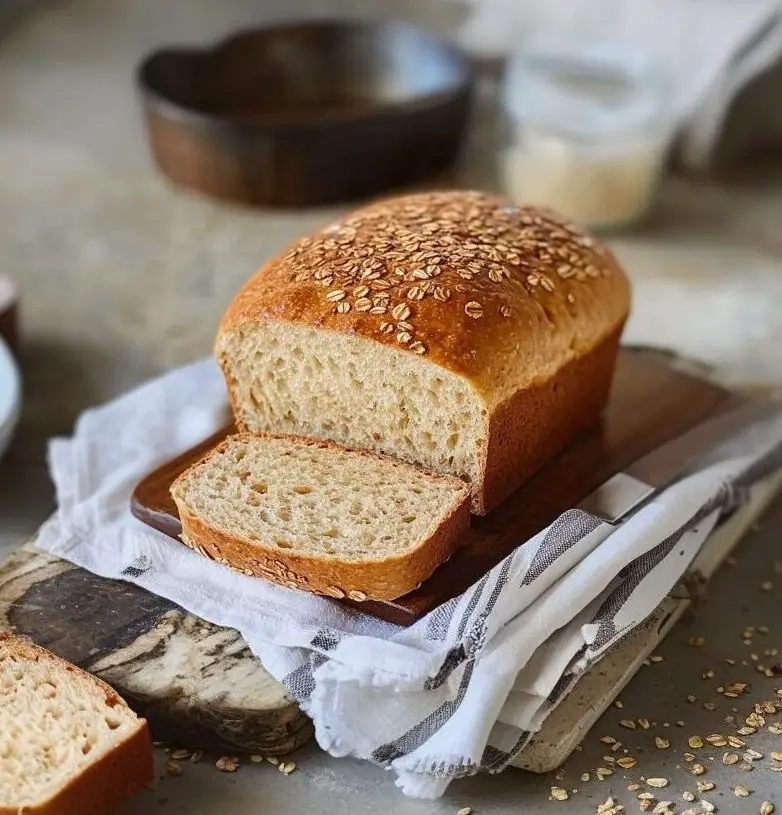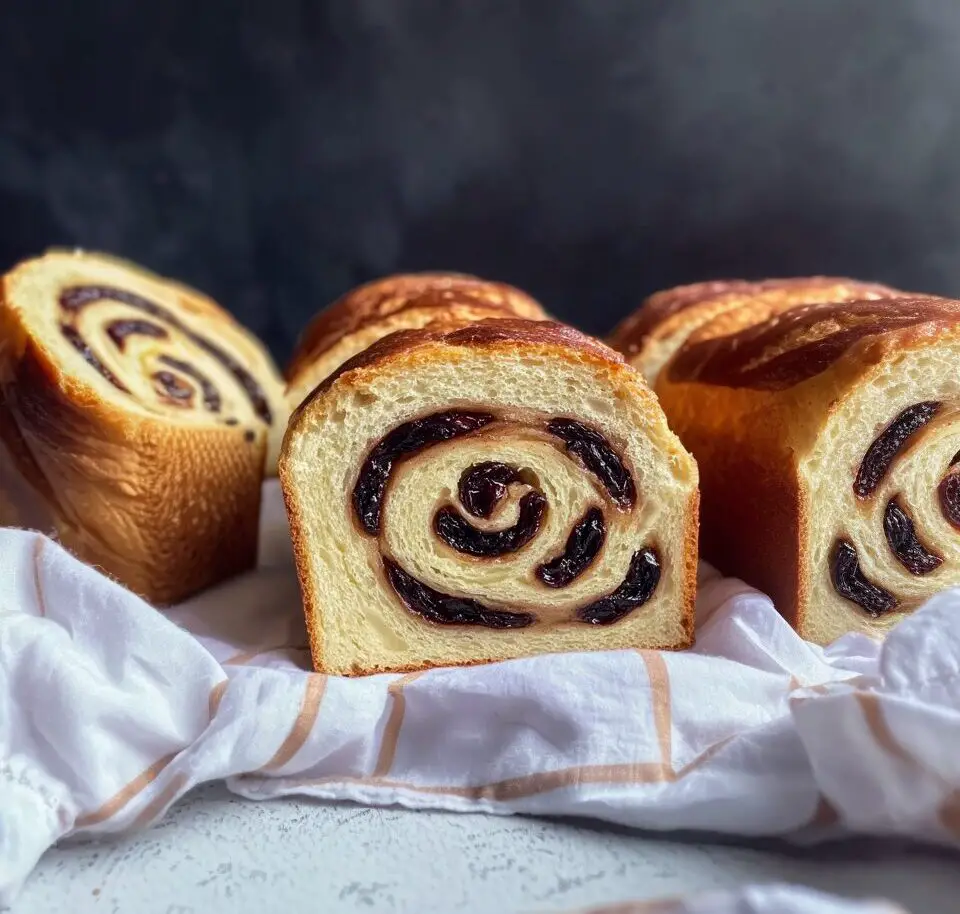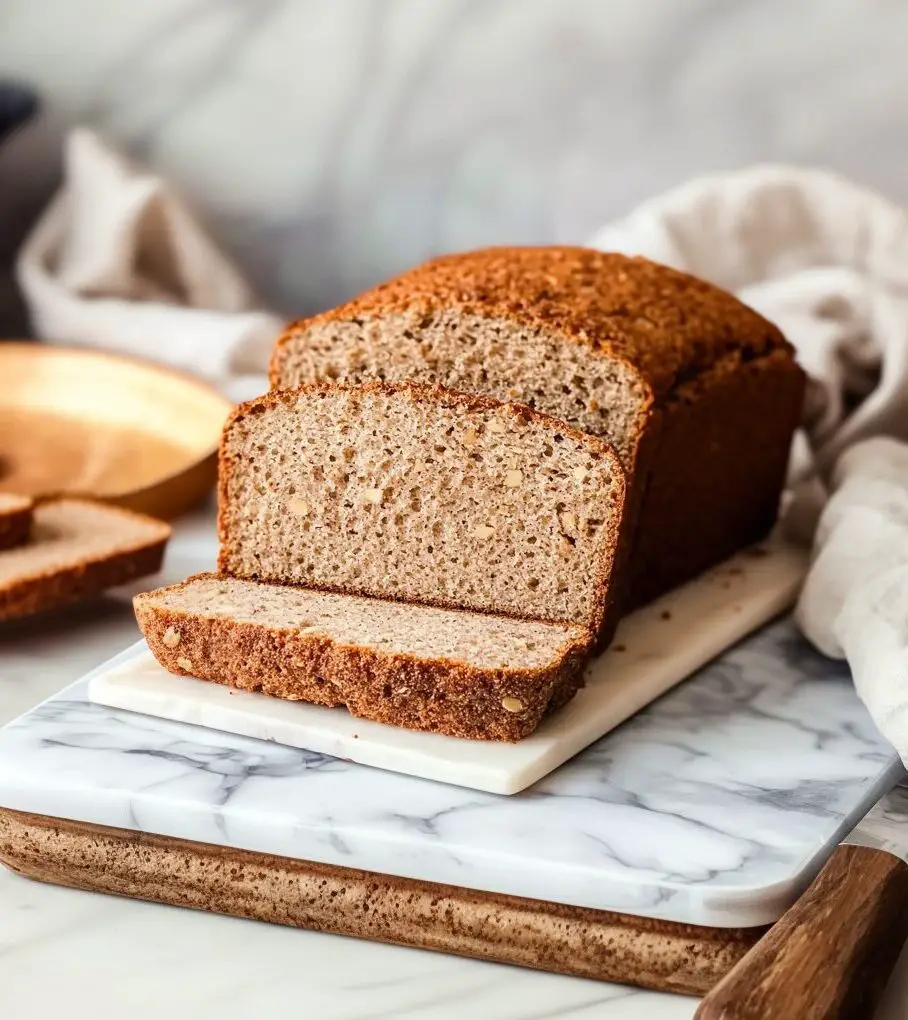This homemade multigrain bread is a soft, flavorful loaf that’s perfect for sandwiches, toast, or enjoying with a pat of butter. Crafted with a blend of whole grains and all-purpose flour, it offers a hearty texture and rich taste. Whether you’re an experienced baker or a novice, this recipe provides a satisfying baking experience and a delicious result.
Full Recipe:
Ingredients
- 1½ cups multigrain flour or cereal mix (homemade or store-bought)
- 2¾ cups boiling water
- 4 tablespoons butter (plus more for greasing pans)
- ⅓ cup honey
- 2½ teaspoons instant yeast
- 1 teaspoon vital wheat gluten (optional, for softer bread)
- 4½ cups all-purpose flour
- 1 teaspoon salt
- ⅓ cup rolled oats (or seeds like flax, sunflower, pumpkin, sesame for topping)
Directions
- In a large mixing bowl, combine the multigrain flour with boiling water. Stir until a thick paste forms. Add butter and mix until incorporated. Let the mixture cool for about 20 minutes.
- Once the mixture is lukewarm, stir in honey, then add yeast and vital wheat gluten if using. Let it sit for 10 minutes to activate the yeast.
- Gradually add all-purpose flour, ¼ cup at a time, kneading until a smooth, slightly sticky dough forms. This process takes about 10-15 minutes.
- Shape the dough into a ball, cover the bowl, and let it rise in a warm place for 45 minutes to 1 hour, or until doubled in size.
- Punch down the dough and divide it in half. Shape each portion into a loaf and place into greased loaf pans. Cover and let rise for another 30-45 minutes.
- Preheat the oven to 375°F (190°C). Brush the tops of the loaves with water and sprinkle with rolled oats or seeds.
- Bake for 35 minutes, or until the loaves sound hollow when tapped. Remove from pans and let cool on a wire rack.
Nutritional Facts (per slice, based on 24 slices)
- Calories: 170 kcal
- Carbohydrates: 30g
- Protein: 5g
- Fat: 4g
- Saturated Fat: 2g
- Cholesterol: 10mg
- Sodium: 150mg
- Fiber: 2g
- Sugar: 5g
- Calcium: 20mg
- Iron: 1.5mg
The Rise of Homemade Bread and the Multigrain Trend
In recent years, there has been a growing interest in baking at home, especially for bread. With the rise of health-conscious eating, many people are turning to whole grains and multigrain recipes to enhance their diet. Whole grains are known for their numerous health benefits, and multigrain bread has become a staple in many households as a healthier bread alternative.
Multigrain bread is often touted as being superior to traditional white bread due to the variety of grains used, which provide different nutrients and fiber. This recipe, in particular, is a great introduction to baking multigrain bread at home, offering a simple and rewarding experience. Not only does it taste better, but homemade bread also tends to be free from artificial additives, making it a healthier and more flavorful choice.
The process of baking your own bread allows you to experiment with flavors, textures, and ingredients, making it a rewarding hobby. For those who are concerned about the quality and freshness of bread bought from the store, making bread at home gives you complete control over what goes into your loaf, ensuring that you and your family are enjoying the best possible bread.
Why Choose Multigrain Bread?
Multigrain bread stands out because it blends different types of grains, offering a more complex flavor profile and a wide range of health benefits. Unlike white bread, which is made from refined flour, multigrain bread contains grains such as oats, barley, rye, and wheat, among others. These grains contribute a variety of essential nutrients such as fiber, protein, and healthy fats, which can help maintain digestive health, provide sustained energy, and reduce the risk of chronic diseases like heart disease.
The Science of Bread Making
Bread making is as much an art as it is a science. The key to great bread lies in understanding how the ingredients interact and work together to create the perfect loaf. The combination of flour, water, yeast, and salt is the foundation of any bread recipe, but the magic happens when these ingredients are brought together in the right proportions and allowed to rise and develop flavor over time.
The yeast in the dough plays a crucial role in fermentation, where it feeds on the sugars in the flour and releases carbon dioxide gas. This process creates the characteristic air pockets in the bread, giving it its light and airy texture. As the bread rises, it develops flavor, and the dough becomes more elastic, making it easier to shape and form. Kneading is essential for developing gluten in the dough, which gives the bread structure and helps it hold its shape during baking.
Baking Techniques and Tips
Baking bread at home doesn’t have to be intimidating. There are several techniques and tips that can help ensure your multigrain bread turns out perfect every time.
-
Using the Right Flour: A blend of whole wheat flour and white flour is commonly used for multigrain bread, but it’s important to ensure you’re using high-quality flour. For an even better texture and flavor, you may want to use whole grain flours like rye, barley, or spelt. These flours not only provide nutrients but also enhance the complexity of the bread’s taste.
-
Kneading the Dough: Proper kneading is essential to develop the gluten in the dough. When kneading, be patient and don’t rush the process. It typically takes about 10-15 minutes to knead the dough into a smooth, elastic ball.
-
Allowing the Dough to Rise: Rising is a crucial part of the bread-making process, as it allows the dough to double in size and develop air pockets. The dough needs to be kept in a warm, draft-free area to rise effectively. If your kitchen is too cold, you can place the dough in an oven with the light on to create a warm environment for it to rise.
-
Shaping the Loaf: When it comes to shaping the dough, it’s important not to deflate it too much. Gently punch down the dough after the first rise, then divide and shape it into loaves. Make sure the loaves are evenly shaped so they bake uniformly.
-
Baking: Always preheat your oven before baking, as this ensures the bread bakes evenly from the start. Place your bread in the center of the oven to allow for even heat distribution, and if you want a crispy crust, you can spritz the bread with water before baking or place a small dish of water in the oven to create steam.
Nutritional Benefits of Multigrain Bread
One of the main advantages of making multigrain bread is the health benefits it offers compared to traditional white bread. The combination of various grains adds fiber, vitamins, and minerals that are often lacking in refined white bread. Some of the key nutrients found in multigrain bread include:
-
Fiber: The high fiber content of multigrain bread helps to improve digestion, regulate blood sugar levels, and reduce the risk of heart disease. Fiber also plays an important role in weight management by helping you feel full longer, preventing overeating.
-
Vitamins and Minerals: Multigrain bread is a good source of B vitamins, including niacin, thiamine, and folate, which are essential for energy production and maintaining a healthy nervous system. It also provides minerals like iron, magnesium, and zinc, which are vital for bone health, immune function, and overall well-being.
-
Protein: Multigrain bread provides a decent amount of plant-based protein, which is important for building and repairing tissues, as well as supporting immune function. The protein content in multigrain bread is often higher than that of white bread, making it a more nutritious option.
-
Healthy Fats: Some recipes for multigrain bread include seeds, nuts, or other sources of healthy fats. These fats are beneficial for heart health and can help lower cholesterol levels when consumed in moderation.
Conclusion: Why Homemade Multigrain Bread is Worth the Effort
Homemade multigrain bread is a fantastic way to enjoy the goodness of whole grains in a soft, flavorful loaf. The process of making bread from scratch is incredibly rewarding, and the end result is a product that not only tastes better than store-bought versions but is also healthier. By incorporating different types of grains, this bread offers a rich combination of flavors and textures that will elevate any meal.








